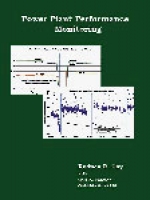Tab Article
Power Plant Performance Monitoring is a compilation of analytic methods to evaluate power plant performance and determine the degradation of major power plant equipment. The methods used for performance test calculations (such as the ASME Performance Test Code procedures) are reviewed, but the focus of the book is on detailed heat balance analysis and expected equipment performance predictions. These more detailed methods are the essential building blocks that enable on-line performance monitoring systems to evaluate degradation with repeatable precision. Power Plant Performance Monitoring explains the following topics :
• Basic Concept of Performance Monitoring
• Curve-Based Methods
• Heat Balance Methods
• Using Commercial Equation Solvers
• Using Commercial Heat Balance Codes
• Data Validation
• Accuracy of Results
• Expected Performance
• Corrected Performance
• Impacts of Equipment Degradation on Plant Performance


